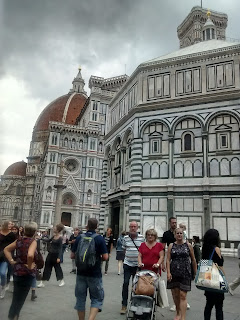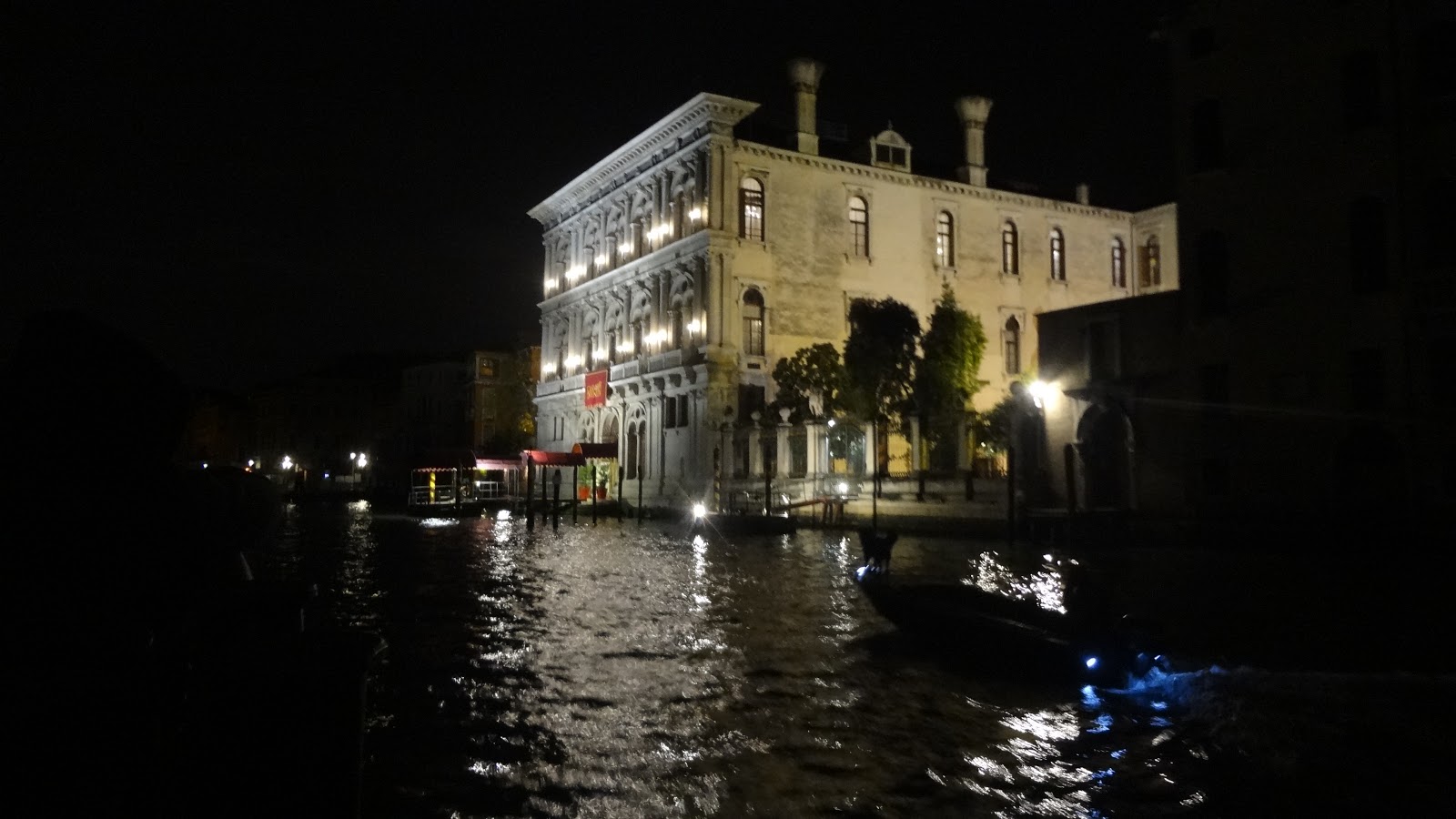Granada
ANDALUSIAN SPAIN
Granada
The bus journey from Madrid to Andalusia was strangely
inviting. Andalusia is the southernmost part of Spain, also known as the Iberian Peninsula. The bosky landscape
around was wild and cultivated. Cultivated with fleeting patches of olive
orchards, which at some places spread far into the horizon? Traversing through
the heart of Spain and somewhere at the back of my mind the landscape triggered the swashbuckling identity of the historical country. In search of El Dorado maybe
one of the reasons why the Moors from Africa invaded Andalusia after crossing
the strait of Gibraltar in the early 8th century. They ruled this
part of Spain till the 15th century. Spain’s heartland, known as the Meseta,
is a large plateau with an average elevation of six hundred meter above sea level is
located in the centre of the Iberian Peninsula. Since Madrid lies on this
plateau most of the journey up to Granada was through this fascinating and partly
arid landscape. There are several interesting places along the way such as Aranjuez
and Toledo. Granada is located in the southern region of Andalusia, mostly
composed of lowlands, mountains and valleys. This charming town is situated at
the foot of Sierra Nevada Mountain Range. There’s only one bus station in
Granada, about three kilometres from the city center. It serves both long
distance and city buses. At the bus station we boarded a city bus and got down
at the Cathedral stop. Then walked down about three hundred metres to Hotel Atenas where
we stayed. A warm and cozy hotel situated right at the centre of the old city. On
both sides of the main thoroughfare were mazes of lanes, by lanes well laid out
perhaps from the middle age resembling a sort of matrix formation. A few steps from
our hotel led to a T junction. The narrow by lane bustled with tempting eateries,
most of them Lebanese and Mediterranean cuisines, jostling at places with their
Spanish counterparts and pubs.
From the Cathedral
stop (Plaza Isabel la Catolica) to Alhambra the public transport system operates
buses in miniature form so that negotiating steep curves while traversing
uphill is easy. Perhaps these were some of the idiosyncrasies of the place I
observed. Buses are quite frequent, bus number C30 if I remember correctly. I
was terribly excited when we boarded the bus next morning. More so, because I
had read a fascinating book ‘Tales of Alhambra’ by Washington Irving, an
American writer, diplomat and wanderer in the early nineteenth century who also
authored the iconic short story ‘Rip Van Winkle’.
As the bus traversed the hilly terrain, a fleeting view of
the snowcapped Sierra Nevada was a mesmerising sight. It gradually dawned upon
me why the Moors were associated with romanticism. Perhaps the Moors exuded a
similar allure of wild and windswept landscapes that captured the imagination of
some great literary names such as writers Emily Bronte in her ‘Wuthering
Heights’, Conan Doyle in ‘Hounds of the Baskervilles’ and poet Emily Dickinson.
Even Washington Irving, about two hundred years back found the flavour of a ‘dear old
romantic Spain’ in this part of ‘half wild’ landscape of Granada. Recorded
history identifies Moors as ‘dark skinned’ inhabitants of southern portion of
Europe as far back as the first century. But by early fifteenth century
Europeans started referring Moors as dark-skinned Arabs from North Africa, Gulf
and the Mediterranean region. When the Moors crossed the straits of Gibraltar from
Morocco and Algeria and invaded the Iberian Peninsula during the first half of the
eighth century, a European scholar penned down a vivid description of the
invaders. ‘The reins of their (Moors) horses were as fire, their faces black
as pitch, their eyes shone like burning candles, their horses were as swift as
leopards and the riders fierce than a wolf in a sheepfold at night.’
Alhambra is derived from an Arabic term meaning ‘the red one’
and pronounced as ‘Al Hamra’. The
Alhambra is yet another medieval city within Granada built over centuries
covering an area of about 35 acres. The complex comprises medieval and Renaissance
palaces, courtyards, gardens and fortresses. Today the entire complex has been
transformed into an UNESCO World Heritage site. The first king of the Nasid
dynasty, King Mohammed Ibn Yusuf Ben (better known as Alhamar) founded the
place where already a military zone and fortress existed. The place had also
been home to earlier fortresses and the 11th-century palace of Samuel ibn
Naghrillah. The fortresses were strategically located, overlooking the
surrounding mountains, Darro River, and forests. Subsequent Nasrid rulers made
significant modifications, particularly during the 14th century under the
reigns of Yusuf I and Muhammad V.
Alcazaba (fortress), the oldest part of the complex constructed
in the 9th century was at the tail end of Alhambra and made us walk
a few kilometres from the entrance gate. But it was worth walking. It was like
moving through different eras of the city called Alhambra. Palaces, residences,
courtyards, gardens, fountains reflected centuries of cultural and religious influences.
The corridor showcased beauty of Islamic architecture in Nasrid palaces; palaces
with unique blend of Muslim, Christian and Jewish after the Christians took
over and expanded and modified the Alhambra; the residence and a grand renaissance
palace of Emperor Charles V (Carlos V), built in the early sixteenth century after
the Moors left the complex ; communal baths, gardens and reservoirs all within
the medina. The Nasrid palaces displayed elements of Moorish beauty in frescoes
adorning the walls, columns, arches, ornamented walls and Mashrabiya lattice
windows. While moving around in this iconic complex, one sight which drew our
attention were large cats, almost double the size of stray cats we notice in
our country. Unperturbed by the continual movement of tourists these Royal Cats
moved around freely in the open spaces, some settling down and relaxing at the
poolside and the courtyards, staring back at us with an air of majesty. Their
great grandparents must have been there since the Moorish era. The cats so
impressed me that I started referring them as the Alhambra cats.
One of the unique constructions we saw was the Patio of the
Lions (or Courtyard of the Lions). This courtyard so named because of a central
fountain surrounded by twelve lions that spewed jet of water. The Nasrid Palace
complex which attracted me most was Generalife, located outside the old gate of
Alhambra. This independent palace complex was designed as a recreational zone
for the Nasrid sultans. Surrounded by gardens,
orchards, vegetable gardens, irrigation channels, fountains and paved pathways,
the entire area exudes romanticism and looks like a piece of paradise on earth.
Its charm is in its serenity. So well preserved that it is hard to believe that
this place was developed some 600 years back. Except for some ruins which
resulted from destruction carried out by the invading army of Napoleon and
strewn over the entire complex (particularly near the entry gate), there is
absolutely no other mark to suggest damages to the palaces and royal residences
They still reflect the opulent opus of the Moorish sultanate.
Battle of Granada was the final battle for Reconquista, when King
Ferdinand and his wife Isabella of Castille vanquished the Moorish regime and
brought in Christian rule. Isabella, in particular, is regarded and hero
worshipped in the southern part of Spain mainly because of her contribution to the
fall of the last Muslim stronghold in the region, bringing in cultural and
cultural changes after 800 years of Moorish rule and also laying the groundwork
for modern Spain. Isabella’s tomb alongside Ferdinand is now located in the
crypt of the Royal Chapel. This sepulchral chapel known as Capila Real was
established by Ferdinand and Isabella on the site of the old mosque of the
city. Till the completion of the chapel in 1517 the remains of the monarchs
rested in the convent of San Francisco dela in Alhambra. After coming out from
the Chapel, we took the walkway built of cobble stones, turned right and
arrived at the courtyard and a flight of long steps leading to the magnificent Santa
Maria Cathedral (known as Granada Cathedral). A Renaissance architecture and a
baroque architecture combined created a stunning façade facing a huge courtyard
surrounded by centuries old buildings, some hosting small shops. It was our
good fortune to listen to some classics and church songs belted out by a young
singer with his own musical accompaniments. His voice echoed and re-echoed on
the façade and the peripheral walls surrounding the courtyard. The effect was
stunningly beautiful under a clear sunny afternoon sky. What mesmerised me was
his strong voice, adding to it his performance of soprano which was something
out of the world.
A further walk through the old quarters from the cathedral,
which wind through market places, tapas bars and cafes took us to a thoroughfare
where stood another beautiful church, the Basilica of San Juan de Dios. Built
in mid-1700’s at the peak of Spanish Baroque period, it also holds the remains
of St John of God (San Juan de Dios). A baroque-style church boasting of interiors
where almost everything is covered in gold. My wife enjoyed the grand interiors. As dusk
was setting in, and my energy started ebbing, I decided to skip
the interiors and relax on a comfortable bench outside the church. I
enjoyed observing the traffic movement, trying to feel the city's essence.
The buildings blend romantic Muslim architecture, gracious Christian architecture, and modern Spanish architecture, most exuding a warm reddish
hue to live up to the meaning of ‘Alhamra’.
Photo credit: Arundhati Sengupta (Ruby)👇
 |
| Inside the Basilica of San Juan de Dios |
 |
| St John of God Basilica |
 |
| The Royal Cats of Alhambra |
 |
| Built in 9th century this is the oldest part of the complex. |
 |
| Alhambra fortress |
 |
| A view of the city from Alhambra |
 |
| Courtyard of the Lions |
 |
| Map of Alhambra |
 |
| The Royal Chapel |
 |
| The ancient gate of Alhambra |
 |
| A garden of Alhambra |
 |
| Artwork of Alhambra |
 |
| One of the Nasrid palaces |
 |
| Granada Cathedral |
 |
| Cathedral premises |
 |
| A beautiful view of the city from atop Alhambra |
 |
| One of the Alhambra Palace |
 |
| Alhambra façade |
 |
| A fascinating garden |
 |
| Cute little Granada Bus Station |
 |
| From the balcony of our hotel |
 |
| A Lebanese delicacy in Granada |
 |
| These roads possibly date back to the 9th century |
 |
| A view of Granada city |




































Comments